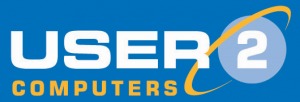The Candela P-12 Shuttle electric ferry, recently unveiled and due to enter service in between Stockholm city and the Ekerö suburb next year, can dramatically cut journey times.
Faster Than Stockholm’s Cars and Subway?
The makers of the world’s fastest, longest-range, and most energy efficient electric ship ever, the electric-powered the Candela P-12 Shuttle, claim that not only is it environmentally friendly, but will make Stockholm’s waterborne public transport faster than cars and subway!
30 Passengers At 30 Knots
The company makes this claim because the powerful electric engine and hydrofoil design mean that the 30-passenger waterborne shuttle can travel at 30 knots, making it a faster way to commute than the subway and bus lines it competes with, and faster that Stockholm’s rush-hour traffic. The electric engine also means that it is much more energy efficient than diesel passenger buses and trains.
Saves Commuters 50 Minutes Per Day
Stockholm commuters are currently facing a 55-minute trip by bus, subway, or conventional ferry (or even car during rush hour) whereas the Candela P-12 Shuttle will cover the 15 km route in only 25 minutes – saving the commuter an average 50 minutes per day!
Hydrofoils Reduce Drag
Candela says that the secret to the P-12 Shuttle’s high speed and long range are the three carbon fibre active hydrofoil wings that extend from under the hull, allowing the ship to lift itself above the water, thus decreasing drag.
Energy Efficient
The Candela P-12 Shuttle’s manufacturers say that its electric engine technology reduces energy per passenger kilometre by 95 per cent compared to current vessels, allowing for an unprecedented range of 50 nautical miles at service speed. This means that, at the equivalent of 0.1 kWh of electricity per passenger kilometre, the P-12 is more energy efficient than a hybrid electric bus. The electric direct-drive engine also means no noise from gears, no oil changes, and no maintenance.
Battery
Also, with up to 200 kW DC charging, the Candela P-12 Shuttle can charge its battery in under one hour!
The End Of Sea Sickness?
One unexpected bonus of a ferry that combines lifting itself above the water with a computer which regulates the hydrofoils 100 times per second is an incredibly smooth ride, which could mean no sea sickness for passengers.
Successful Trial Could Mean A Shift To The Waterways
The first P-12 Shuttle is due to undertake a nine-month trial period during 2023 and, if it meets expectations, the hope is that Stockholm’s fleet of over 70 diesel vessels will eventually be replaced by P-12 Shuttles. This could also mean a shift away land transport on congested highways to the city’s waterways.
What Does This Mean For Your Organisation?
City commuting is often major source of frustrating congestion for workers, but also of pollution from the cars and the diesel public buses and trains. An environmentally friendly, sustainable, fast, and comfortable alternative, such as the P-12 Shuttle could be the welcome shape of things to come. For canal cities and cities with waterways that lead right into or close to the centre from suburbs, provided the price is right and the capacity is available, commuters may be tempted to switch from the bus of train to the water shuttle instead. City councils are also likely to favour schemes that cut emissions, reduce city centre congestion, and present a forward-thinking, environmentally conscious image of a city. Although many cities are now switching to electric buses and trains/trams, electric ferries don’t suffer the same traffic congestion problems and this reliability and timesaving may be more attractive to commuters.




